Good Times on The Tuckasegee
We’re thrilled to finally celebrate the official designation of the Tuckasegee Blue Trail in 2019.
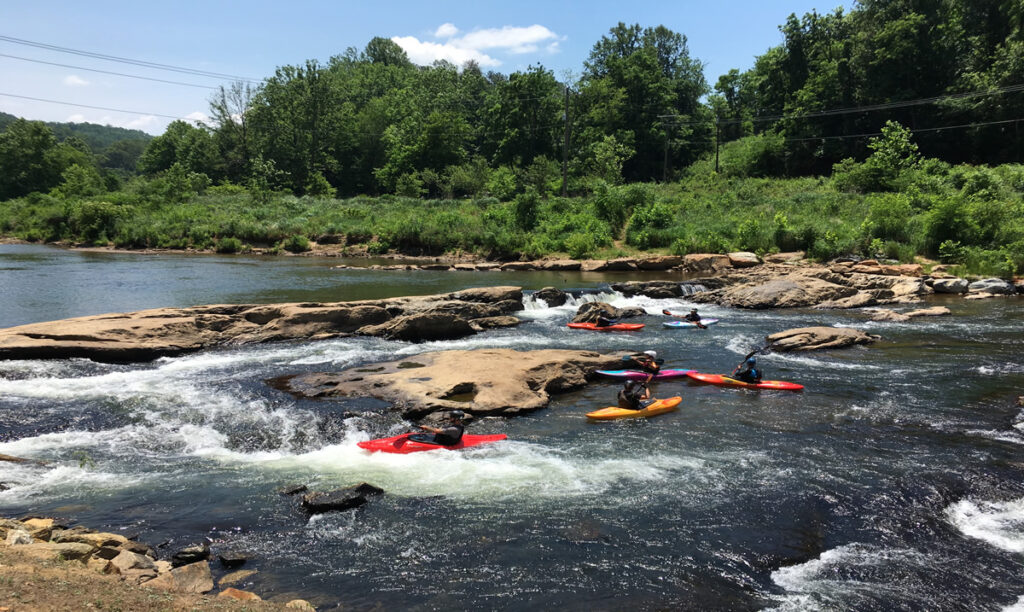
On a sunny summer morning in the mountains of North Carolina, I stepped into an inflatable kayak and set off down the Tuckasegee River. Known affectionately as the Tuck, this river was named after daksiyi, the Cherokee word for “box turtle place.” It flows from the mountains of northeast Georgia across North Carolina and into Tennessee, forming a part of the Little Tennessee River watershed.
My colleague and I were paddling the newly established Tuckasegee Blue Trail — a pristine 60-mile stretch of stream celebrated for fishing, boating and exploring. Just as hiking trails are designed to help people explore the land, blue trails like this one help people discover rivers.
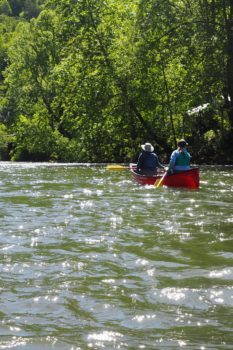
Tuckasegee River | Photo by Jack Henderson
Today, we paddled my favorite section of the Tuck. My heart pounded as we navigated Dillsboro Drop — a beautiful, natural rock ledge and the first in a series of class II and III rapids. I knew the area was rich in native mussels and fish, who moved back after a dam was removed from this exact spot in 2012. We continued over rocky riffles teaming with trout and by riverbanks shaded with native river cane and rhododendron as we eased our way downstream. While we took a break on one of the sandy riverside beaches, families floated by in rafts and canoes, and bald eagles soared overhead. I breathed in the mountain air and considered how special this place is — and why I work every day to protect it.
The Tuck has long been a focus of American Rivers’ conservation efforts in the Southeast. After years mapping out a vision and working alongside local leaders to identify goals for conserving the river and its adjacent lands, we’re thrilled to finally celebrate the official designation of the Tuckasegee Blue Trail in 2019. The newly available blue trail map pinpoints the best spots for fishing, wildlife spotting, cultural exploring, picnicking and camping.
Connecting local people with their hometown river is just part of American Rivers’ broader efforts to protect this aquatic home for myriad fish, mussels and river life found nowhere else in the world.
“The sicklefin redhorse is a fish native just to western North Carolina,” says Mike LaVoie, the Natural Resources Manager for the Eastern Band of Cherokee Indians. “This fish used to migrate in large numbers and really provided a dependable source of protein after a long winter. Even though it wasn’t described by science until the early 90s, Cherokee always had a name for it, which translated to ‘wearing a red feather.’ Traditional ecological knowledge superseded scientific knowledge for this species’ significance.” The Cherokee people have deep roots in the Tuck, controlling just a tiny fraction of their original aboriginal land, and play an active role in river restoration in the Little Tennessee watershed.
“It’s about us helping to put that puzzle back together,” LaVoie says.
Another critical piece of the restoration puzzle is lessening the impacts of climate change, urbanization and erosion on water quality and the river ecosystem.
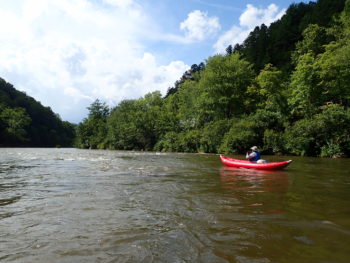
Tuckasegee River
“If you put a frog into a bucket of hot water, it will jump out,” says Jason Meador of Mainspring Conservation Trust, an organization dedicated to conserving and restoring lands and waters of the Southern Blue Ridge. “If you gradually let the water warm up, the frog will never realize it’s a problem. Sedimentation is the same way: It happens over decades, and no one notices the problem until it’s too late.”
American Rivers is taking a landscape-wide approach to conserving the Little Tennessee watershed along with partners like Mainspring Conservation Trust and the Eastern Band of Cherokee Indians as part of the Little Tennessee Native Fish Conservation Partnership. This Partnership supports the first Native Fish Conservation Area designated in the country and joins 25 state and federal agencies and nongovernmental organizations in conservation. The Partnership works with local communities to protect native species such as the endangered Appalachian elktoe mussel and the sicklefin redhorse fish in this amazingly diverse ecosystem.
Together with our partners, we are executing projects, such as river restoration, and leveraging funding on a scale none of us could make possible on our own. We are engaging local farmers and communities and raising their awareness of the uniqueness of their river system.
“How well people take care of the land determines how healthy our river and waters are,” Meador says. “Once we engage with folks and they understand the watershed concept, they realize why our little creek is so important and why we must do everything we can to make it healthier.”
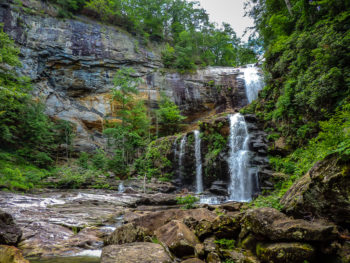
High Falls, Tuckasegee River | Photo by Kasia Halka
LaVoie adds: “Our vision is to have a river system that more resembles how it was before Europeans were in the area, and to have our native fish and mussels abundant and available for Cherokee to utilize for subsistence purposes. We are constantly thinking about clean water and what it means for human use and native fauna. We want more of our community in the river fishing, swimming and connecting to it, so that they value it and can sustain it into the future.”
Back on the Tuckasegee Blue Trail on that vibrant summer day, I wondered: What if we can take out the Cullowhee Dam and help the Tuck flow freely once again? What if we can write a new future for the Appalachian elktoe mussel and sicklefin redhorse? What if we can find new ways to give people greater access to their river? What if we can keep the rivers in the Little Tennessee swimmable, fishable and drinkable for future generations?
All this — and more — is possible, with our strong partnerships, dedicated supporters and a clear vision of what the future could be.


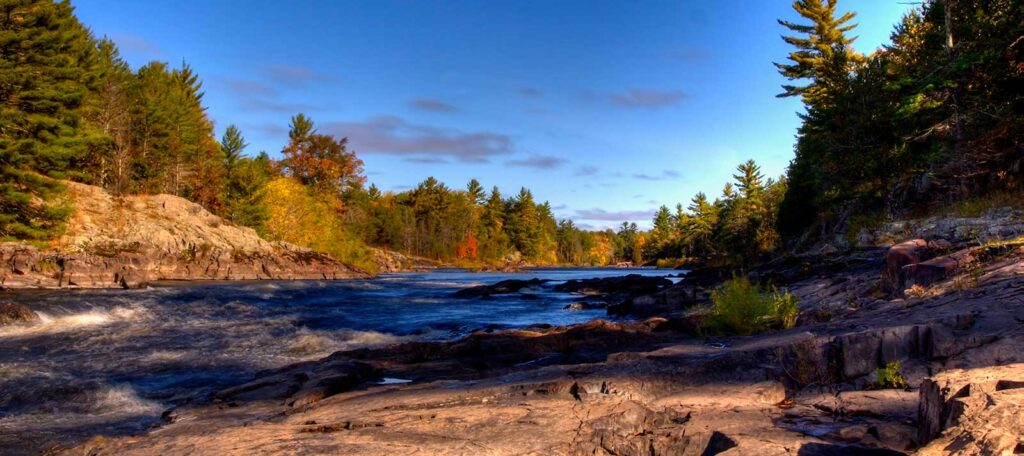

1 response to “Good Times on The Tuckasegee”
Keep up the good work.